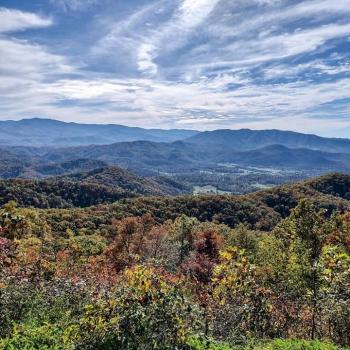My first grade teacher began every class with prayer. It was a trap. She did it illegally. And it obviously meant nothing to her. She was a child-beater. She despised me. I was forced to write right-handed. And I believe her actions had to do with the shock of desegregation. She never thought in her career that she would have to teach white students. Looking back, I see that many white teachers were equally astonished to be teaching black students. But none of that is supposed to matter because we prayed. Or so you would think listening to some people.
The Trap of the Ideal
Officially led school prayers and public devotional Bible reading were ruled unconstitutional in successive Supreme Court cases in 1962 and 1963. Southern school systems were dealing with desegregation at the time. My own school system was not desegregated until 1968. I started first grade four years later. Many people fall into the nostalgic pitfall remembering their childhood. I remember almost daily paddlings and trying my best to please an abuser. I did not tell my parents because I was warned if I was spanked in school I could expect another one when I got home.
Idealizing the past, or childhood, or basic education are traps. Nostalgic school prayer is a trap for most boomers and early X-ers. The other day someone shared a meme about “the need for school prayer.” The sharer went on to say that the poor children are not given opportunities to learn to pray or have devotions. This is pious sounding nonsense.
We romanticize childhood, school days, and wonderful bucolic settings where church was held. It is quixotic to try and restore something that never existed. It is a trap that allows a person to bemoan what is lost and reject what is present or could be in the future.
The Trap of for Children Only
I was a youth minister from 1990 to 1993. I have many good memories of that time. Some memories are puzzling. For instance, I remember that every outing or gathering with the Youth was to include a devotional. The church leaders insisted on them. If the Youth went skating together, we had to have a devotional. However, the gatherings and outings for adults,that did not involve going to a revival or some other church service, never required a time of devotion. Why not?
The answer is that to the minds of most adults, prayer is for children. The assumption is that the children should learn what the adults already know how to do. The fact that adults may not do it is immaterial. The “poor kids” miss out on learning the hypocrisy of the adults.
The adults are caught in the trap of thinking that children will be better behaved if they learn to pray. Would employers forcing adult employees to pray make the workplace any better? If you think it would why not suggest it and enforce the rule. And ask why adults are keen on having kids pray in school but do not take them to church? Isn’t that the place they should learn prayer?
How I Learned to Pray
I learned how to pray in libraries. I read books on prayer, devotions, and methods of praying. The blessings of meals or the prayers before bed did not teach me to pray. But I was better able to understand those prayers when I became an adult.
I learned to pray by practice. The prayers my teacher led were thanksgivings. The praying for anything else was not on the agenda. I am pretty sure she never did any self-reflection. I pray. Being the pastor I am often the designated “prayer leader” for anything that happens. It is a good thing I studied the subject.
Pious Sounding Nonsense
Church leaders, both lay and clergy, should turn away from the precious and fragile sense of piety. They should discourage it. We should encourage prayer that comforts, offers healing, asks for mercy, and declares repentance. Prayers of praise and thanksgiving have value in the light of these other forms of prayer.
There is one time I support public prayers in schools. The prayers of healing after tragedies are as important to students as they are to adults. I have gone to schools and given such prayers for those students who wished to participate. But it is only when we really learn to pray that those kinds of prayers can be given in real confidence.
I once had a Bishop who observed, quite tellingly, that in all his time as a pastor no pastor-parish relations committee ever asked about his prayer life. They asked about plans, actions taken, and other issues that could be measured. But never about how he managed to have the spiritual strength for the work he did. Far too many lay members of the church misunderstand prayer. I wonder if many older lay members have this same misunderstanding because prayer has always been an empty required ritual in school, at meals, at ballgames, and even at church. The disciples asked Jesus, “teach us to pray.” They did not assume they knew it even with prayers offered publicly everywhere they turned.












